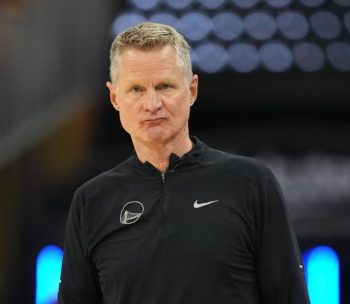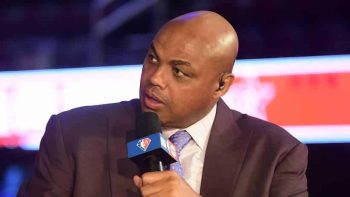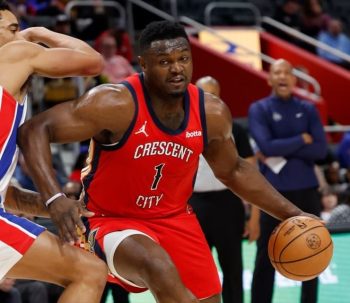NBA
Dunc’d On: Managing In-Game Injuries

Teams Should Be More Cautious With Ankle Injuries
An underrated aspect of the Golden State Warriors’ dominance this season has been their health – long their Achilles’ heel. Andrew Bogut missed last year’s playoff loss to the Los Angeles Clippers, while ankle injuries to Bogut and Stephen Curry derailed the Warriors’ upset bid against the San Antonio Spurs in 2013. This year, however, the only key rotation player to miss major time has been Bogut for a 12-game stretch in December and January. That will change as Klay Thompson is projected to miss 7-10 days (“maybe more, maybe less,” according to coach Steve Kerr) with this ankle injury suffered against the Los Angeles Lakers on Monday night.
https://vine.co/v/OVvQrATJmwx
That is a standard amount of time to miss for an ankle injury, but it is troubling that Thompson was allowed to finish the game.
He was clearly limping after the sprain, and the injury was severe enough that he had to go back to the locker room to get re-taped once, exiting late in the third quarter. When he returned, it was still with a visible limp, and he missed a couple of one-foot layups later in the game, as it appeared he was not confident exploding to the basket to finish. All of that was clear to your writer in the media seating at the top of the lower bowl. What’s more, a look at the video* shows this is not a garden-variety tweak. Thompson puts all of his weight on his right foot as he prepares to explode up. Generally, the more weight a player has coming down on his foot, and the more he is planning to explode off it when it turns, the worse the sprain is. These issues all should have been apparent to the training and coaching staffs.
At the following day’s practice, Kerr explained the decision to keep him in the game.
“We didn’t think it was anything big, but after the game it swelled up,” Kerr said. “He went to the locker room, he said it didn’t hurt that bad at all, it wasn’t a bad sprain. He went to the locker room, got it re-taped, they checked it out, said he was fine, [trainer] Johan [Wang] said he was fine, and he came back and played.”
Certainly the human element of Thompson insisting he was okay to play must be considered. To some extent, the training and coaching staff must trust the player’s self-assessment. But that must be balanced against the fact that competitive players will always default to remaining in the game if it is at all possible. In this case, Thompson likely had extra motivation against the Lakers with his father, Mychal, in attendance. And if this were a playoff game, or even a really meaningful regular season game, perhaps the decision to let him finish out would be defensible. But the Warriors have almost nothing important to play for right now, and were playing an inferior opponent at home in any event.
It is impossible to say for sure whether staying in exacerbated the amount of time Thompson will miss, although multiple trainers and doctors I have consulted with have told me continuing to play on a sprained ankle can increase the swelling afterward, to say nothing of the increased risk of further injury. And that would certainly jibe with intuition. If Thompson (or any other Warriors player during this stretch) appears even slightly injured, he should be taken out of these meaningless games for precautionary reasons.
The Warriors are by no means the only team to suffer from issues managing in-game return to play after injuries. The Chicago Bulls have struggled with this for years, and this year have seen Taj Gibson, Joakim Noah and Derrick Rose all miss games after returning in-game from ankle injuries. Milwaukee Bucks forward Giannis Antetokounmpo sprained his ankle against the Brooklyn Nets and stayed in the game, although he did not miss any time afterward. Many other teams have had the same issue.
I do not mean to suggest that every injury, even in a regular season context, requires being shut down for the rest of the game. But as teams become more and more aware that individual regular season games are less important, taking a more cautious approach to these injuries – particularly ankle sprains – is advisable. In cases such as Thompson’s where the player clearly does not look 100 percent after the injury, he should be removed from the game even if he insists he is fine.
How to Hack-a-______
Recent weeks have seen the proliferation of Hack-a-_____ tactics, usually against the Clippers’ DeAndre Jordan. The efficacy of this strategy in an overall sense has been capably debated elsewhere, but like any strategy it should be employed so as to maximize the chance of success. Coaches often flub this tactic by failing to put in their best possible offensive lineup. If you are going to be fouling every single time, stops are irrelevant aside from the ability to defensive rebound free throws. Steve Clifford was the latest practitioner to stick with his defenders on Tuesday against the Clippers, rolling with Michael Kidd-Gilchrist and Gerald Henderson on the wings while Kemba Walker rode the pine during the intentional fouling. Tom Thibodeau also made a similar mistake recently, leaving Kirk Hinrich in the game while the Bulls intentionally fouled Jordan.
Keeping the best offensive players on the floor is especially important when executing a fouling strategy, because scoring against a set defense after free throws is much more difficult than on an average possession, which could occur after a missed field goal or steal. And even if the fouling occurs during a time the best players are normally on the bench, getting them out on the floor should not be an issue because of how much rest they will get while the opponent shoots free throws.
Teams would also be wise to change their tactics on offense knowing they are going to foul. Much as in late-game trailing situations, it would behoove offenses to crash the offensive glass hard knowing the ensuing possession is going to end in a foul before a fast break can occur.
Team strengths and weaknesses should also play into the decision on intentional fouling. A squad with a great defense, or one that is especially reliant on turnovers or transition to score points, should be less interested in employing the strategy. On the other hand, a plodding team that relies on postups, is great on the offensive glass and struggles to defend could make more use of it.
Late-Game Tactics Highlight Coaching Differences Between Warriors, Lakers
The Warriors executed flawlessly late in their 108-105 victory over the Lakers. After L.A. made free throws in the last 10 seconds, Draymond Green sprinted to the endline to inbound the ball, while Stephen Curry immediately moved to get open. The result was four easy made free throws as the Warriors maintained their lead.
On the other end, Golden State successfully fouled twice in the last 10 seconds to prevent three-pointers up by three.* On the last play of the game, Green stripped the ball from Wesley Johnson at midcourt to prevent another three-point attempt, knowing the outcome would be either a steal or a three-point preventing foul.
The Lakers’ strategy was less impressive. They trailed by three after rebounding a Curry miss with 11 seconds remaining. Byron Scott’s first mistake was calling an immediate timeout. The Lakers had a defensive rebound and could have pushed the ball against a scrambled defense, a situation that is much more likely to yield a good look at a tying three. Instead, the timeout allowed Golden State to set up their defense, substitute defensive players, receive instructions from the coaching staff to switch everything and foul to prevent the three-pointer. At the very least, Scott could have allowed his team to push the ball upcourt and then take the timeout if the possession did not look promising.
Post-timeout, the Warriors did successfully foul with six seconds remaining. At this point, Scott instructed Jordan Clarkson to make both free throws to get the Lakers within one, defensible since the Lakers still had a timeout to advance the ball on a subsequent possession. However, the Lakers made no effort to deny the ball to Curry on the ensuing inbounds despite having time to set that up during the free throws, allowing an overwhelming likelihood that they would be down three on their next possession.
After Curry indeed drained both free throws, Scott burned his last timeout to advance the ball. With three seconds remaining, Green fouled Wayne Ellington before he could get off a three-pointer. Ellington made the first. At this point, there was no rational option other than intentionally missing the second free throw and attempting to get the offensive rebound. While players constantly flub this by actually making the shot or hitting only the backboard, with the proper approach it is very easy to simply aim a ball and a half to the left or right and shoot a normal shot to create a miss. This had the added advantage of being able to tell teammates ahead of time which side of the basket the ball will be coming off. Teams could even consider running little pick plays on the rebound to try to corral the intentional miss if they can anticipate the general area the ball will end up.
Instead, Scott directed Ellington to make the second, a hopeless strategy. If the Lakers made the second free throw with only three seconds remaining and no timeouts and then fouled, they had little to no chance of successfully navigating the entire length of the court and getting a shot off with so little time. What’s more, the Warriors could simply foul again as they dribbled the ball up, which is essentially what happened when Green was able to strip Johnson at midcourt. The Lakers never got a chance at a tying shot.
To be clear, the odds were against the Lakers no matter what Scott did. And analysts risk focusing too much on late-game coaching and missing the 99 percent of coaching that goes on during the rest of the game or throughout the season. But the last 10 seconds of Monday’s game provided a perfect example of how not to manage late-game situations.













